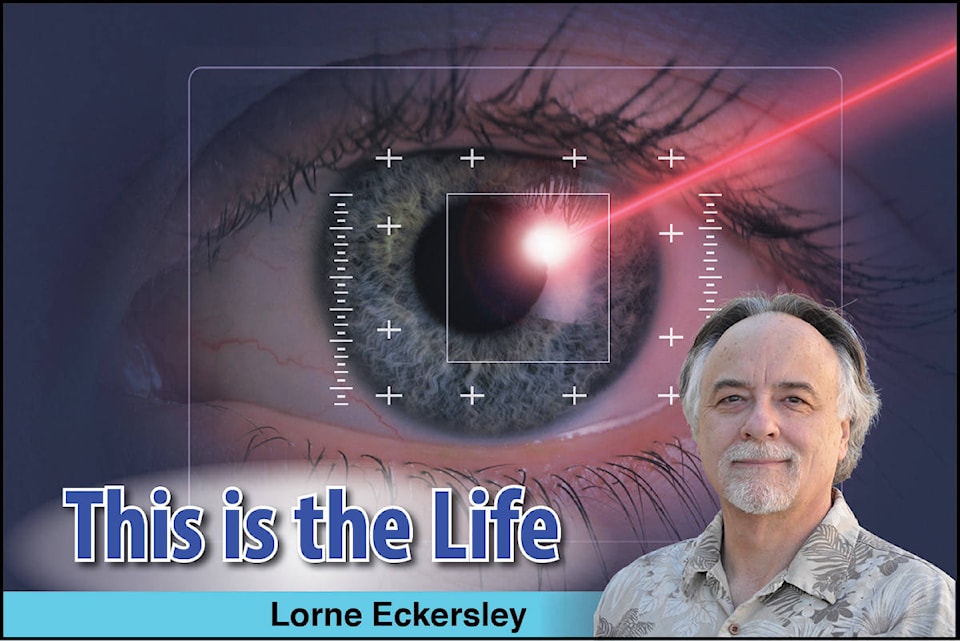About 13 years ago I found myself increasingly frustrated with the thick glasses I was wearing to correct my big myopia (and astigmatism) problem. The constant adjusting, especially while driving, was driving me crazy and the bridge of my nose hurt all the time.
After consulting with my optometrist I made an appointment with the Gimbel Eye Centre in Calgary, because Dr. Howard Gimbel is a world-renowned ophthalmologist and I wanted to reduce any possibility of screw-ups. When you have poor eyesight you get a pretty good idea of what it might be like to go blind.
Lasik surgery was the way to go, I thought, but that turned out not to be an option. That particular procedure involves a reshaping of the cornea, and my corneas were not thick enough to make the surgery effective. I did have some options, though, I learned from Gimbel’s staff. I could have my lenses removed and replaced with artificial ones, or I could have intraocular contact lenses inserted into my eyes.
The latter option was more costly, but I chose it because it was less invasive. The insertion of the implant contacts requires only a tiny slit and the rolled-up lens is then slid in and opened up. The results were instantaneous and, in my eyes (pun intended) the change was miraculous. It didn’t even particularly bother me that a cataract developed soon after in my left eye (a not uncommon situation with this procedure) and not much more than a year later I had the ICL removed and then basic cataract surgery and lens replacement.
For the next twelve years I enjoyed not having to wear glasses for most of my day. I did use prescription glasses for sun protection and to sharpen up the sight in my right eye while driving, and reading glasses for any lengthy bouts of reading. Both sets of glasses were light and quite comfortable.
Several years ago the telltale signs of cataracts began to show up in my right (and dominant) eye, but only in the summer had it progressed to the point that surgery was recommended.
As I awaited my appointments at the Eye Centre (pre-op, surgery and post-op appointments took up most of a week) I was thrilled to learn that Dr. Gimbel would be doing my surgery. He was 70 years of age when I first met him and is now 83.
When he walked into the office for my pre-op check, my first temptation was to say, “You’ve shrunk!” The once imposing physical specimen, lean and very fit, now seems smaller, but I suspect that in the years that I have enjoyed good eyesight I have firmly planted him atop a very large pedestal. He remains as reassuring and confidence-inspiring as ever, though.
I sailed through the procedure easily, and as I walked back to my sister’s house nearby, I could already tell that the right eye was now seeing as clearly as the left. The next day’s checkup revealed that the pressure in the eyeball was high, not surprising because I am a glaucoma candidate already. It’s an easily controlled problem, though. As I sped through a reading of the eye chart I knew I was seeing very well. On the final line I could identify a couple of letters, then told the optometrist that the others were clear, but just too small. She pointed out that those letters were on the 20/15 line. I am now comfortably at 20/20.
In a discussion with a friend last week we shared our eye surgery experiences and learned that we both have the same opinion of modern technology for eye correction. It is indeed miraculous.
